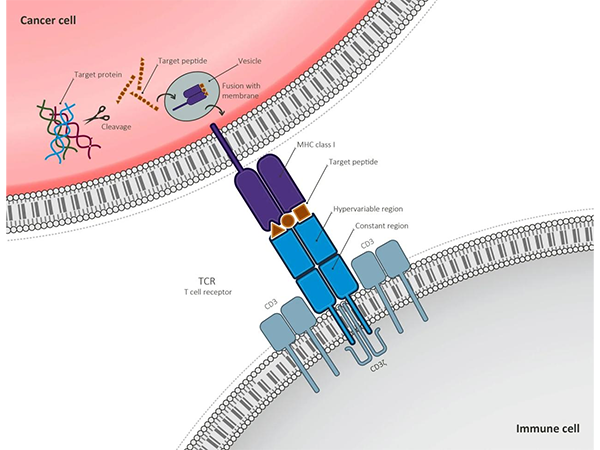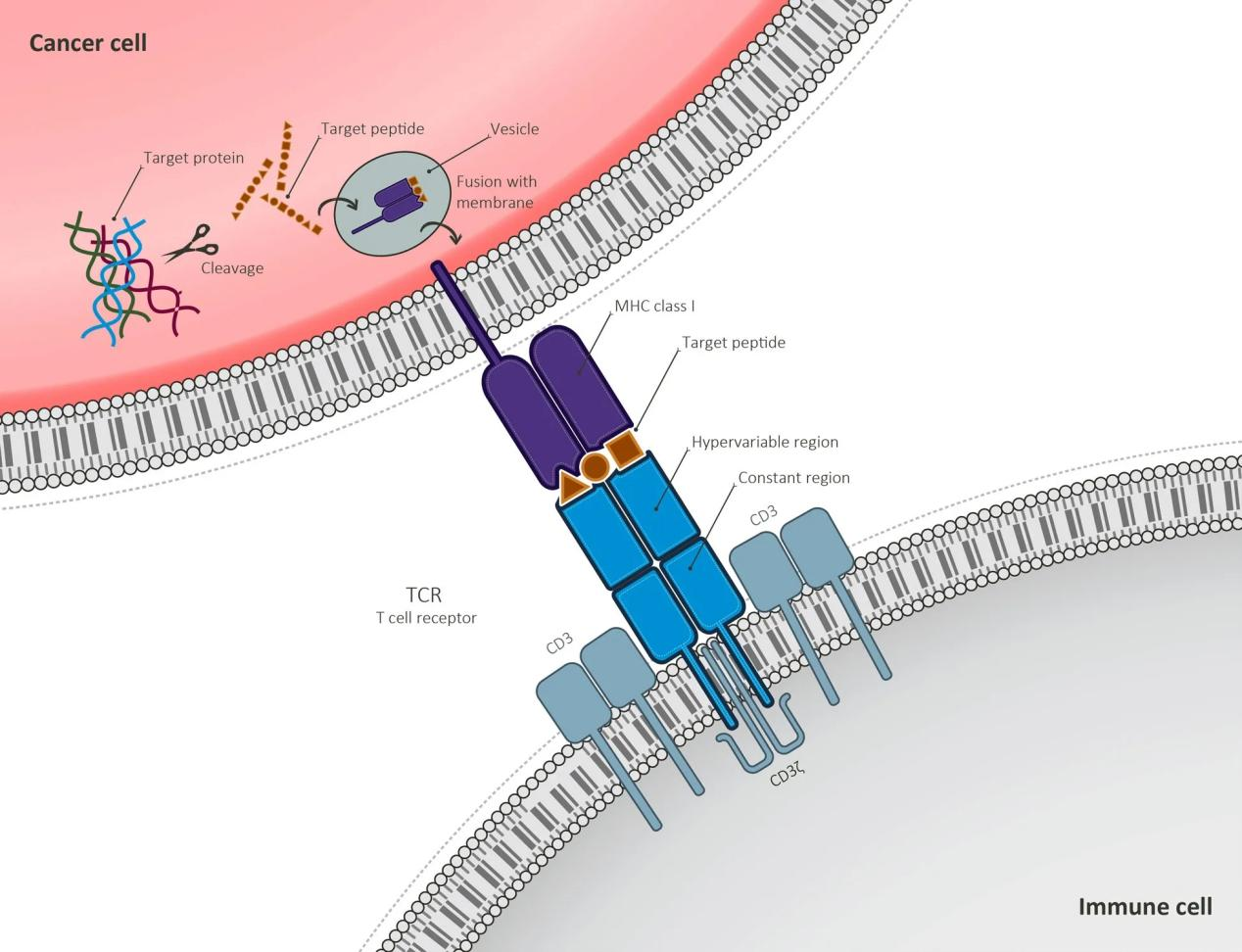CD3 Monoclonal Antibodies: Key Players and Development Prospects in the Field of Immunotherapy

In the vast fields of immunology and biomedical research and development, CD3 monoclonal antibodies hold a pivotal position due to their unique mechanism of action and extensive application potential. From the basic recognition of immune cells to the treatment of complex clinical diseases, CD3 monoclonal antibodies are gradually demonstrating their enormous value.
CD3 Molecule: The Core Component of T Cell Immunity
CD3, known as "Cluster of Differentiation 3," is a crucial protein complex of the T cell coreceptor. It is composed of five transmembrane peptide chains, namely γ, δ, ε, ζ, and η. These peptide chains work in coordination and are closely associated with the T cell receptor (TCR) to form the TCR - CD3 complex. This complex plays a central role in the recognition of antigens by T cells: the TCR is responsible for specifically recognizing the antigenic peptides presented by the major histocompatibility complex (MHC) molecules, while CD3 undertakes the key task of transducing the activation signals generated by antigen recognition into the interior of T cells.
The cytoplasmic segment of the CD3 molecule contains an immunoreceptor tyrosine-based activation motif (ITAM). After the TCR recognizes the antigen, the tyrosine residues in the conserved ITAM sequence of CD3 will be phosphorylated by the tyrosine protein kinase p56lck within T cells, and then recruit the tyrosine protein kinase ZAP - 70 containing the SH2 domain. This series of biochemical reactions is a key step in the early stage of the activation signal transduction of T cells and plays a decisive role in the subsequent activation, proliferation, and differentiation of T cells. Once a gene mutation occurs in the CD3ε or γ chain, the signal transduction of T cells will be blocked, and the immune response will be severely affected.

The Mechanism of Action of CD3 Monoclonal Antibodies
Based on the crucial position of CD3 in T cell immunity, monoclonal antibodies targeting the CD3 molecule can influence the functions of T cells through various means. On the one hand, it can stimulate the activation signal transduction of T cells, enabling T cells to perform functions such as tumor killing; on the other hand, it can also block the activation signals of T cells, eliminate effector T cells, or induce the generation of regulatory T cells, opening up new avenues for the treatment of organ transplantation rejection and autoimmune diseases.
On the surface of T cells, CD3 is non-covalently bound to the TCR to form the TCR/CD3 receptor complex. Among them, the δ/ε and γ/ε of CD3 form heterodimers, which together with the α/β chains of the TCR constitute a stable structure. Antibody drugs targeting CD3 usually recognize CD3ε to activate T cells. However, during the production process, the heterodimers formed by CD3ε with CD3δ or CD3γ have the problem of uneven monomer ratios, which affects the structure, function, and batch stability of the drugs, becoming one of the challenges in the development of bispecific antibody drugs.

Clinical Applications and Research Progress of CD3 Monoclonal Antibodies
CD3 monoclonal antibodies have demonstrated great potential in the field of clinical treatment, especially making significant breakthroughs in the treatment of diabetes. In 2019, the research team led by Kevan C. Herold from Yale University in the United States discovered that the humanized anti-CD3 monoclonal antibody Teplizumab could effectively delay the onset of type 1 diabetes in high-risk populations. Previously, Teplizumab failed to alleviate the symptoms of patients in the initial stage of type I diabetes in a Phase III trial in 2011, announcing its clinical failure. However, after Prevention introduced and restarted the Phase III clinical trial in 2018, the drug achieved positive results. It can effectively relieve β-cell damage and reduce the demand for exogenous insulin, delaying the occurrence of diabetes in patients with insulin-dependent T1D by an average of about 3 years. Teplizumab has obtained the Breakthrough Therapy designation from the FDA and the "PRIME" designation from the EMA. If approved, it will be a major breakthrough in the field of diabetes treatment over the past century.
In addition to diabetes, CD3 monoclonal antibodies have also shown certain curative effects in the treatment of cancer, chronic leukemia, liver diseases, and neurological diseases. Since the 1990s, it has been applied in the CIK cell therapy technology. Working together with other cytokines, it can generate CIK cells with high-efficiency anti-tumor activity, having a positive impact on the treatment of various diseases.
Summary
Although some anti-CD3ε monoclonal antibody drugs have been withdrawn from the market due to adverse reactions in the past, this has not dampened the enthusiasm of researchers for the study of CD3 monoclonal antibodies. With the deepening of research and the advancement of technology, it is expected that the existing obstacles can be overcome in the future, and safer and more effective CD3 monoclonal antibody drugs can be developed, bringing new hope to more patients and promoting the field of immunotherapy to a new height.
Product Information
| Gatalog Num | Product Name | Product Parameters | Price |
| S0B1007 | Mouse Anti-Human CD3 Antibody (S-R531) | Host : Mouse | Inquiry |
| Conjugation : Unconjugated | |||
| S0B2258P | CD3 epsilon Mouse mAb,PBS Only (SDT-570-36) | Host : Mouse | Inquiry |
| Conjugation : Unconjugated | |||
| S0B2132 | CD3 epsilon Recombinant Rabbit mAb (SDT-241-49) | Host : Rabbit | $880 |
| S0B2132P | CD3 epsilon Recombinant Rabbit mAb,PBS Only (SDT-241-49) | Host : Rabbit | Inquiry |
| S0B0215 | CD3 epsilon Recombinant Rabbit mAb (Alexa Fluor® 647 Conjugate) (S-241-49) | Host : Rabbit | Inquiry |
| Conjugation : Alexa Fluor® 647 | |||
| S0B0217 | CD3 epsilon Recombinant Rabbit mAb (Alexa Fluor® 594 Conjugate) (S-241-49) | Host : Rabbit | Inquiry |
| Conjugation : Alexa Fluor® 594 | |||
| S0B0212 | CD3 epsilon Recombinant Rabbit mAb (Alexa Fluor® 555 Conjugate) (S-241-49) | Host : Rabbit | Inquiry |
| Conjugation : Alexa Fluor® 555 | |||
| S0B1610 | CD3 epsilon Recombinant Rabbit mAb (Alexa Fluor® 488 Conjugate) (SDT-241-49) | Host : Rabbit | Inquiry |
| Conjugation : Alexa Fluor® 488 | |||
| S0B2043 | S-RMab® CD21 Recombinant Rabbit mAb(SDT-007-47) | Host : Rabbit | Inquiry |
| Conjugation : Unconjugated | |||
| S0B2074 | S-RMab® ErbB2 Recombinant Rabbit mAb (SDT-069-57) | Host : Rabbit | Inquiry |
| S0B2112 | S-RMab® E-Cadherin Recombinant Rabbit mAb (SDT-R088) | Host : Rabbit | $880 |
| S0B2224 | S-RMab® E-Cadherin Recombinant Rabbit mAb (SDT-438-5) | Host : Rabbit | Inquiry |
| Conjugation : Unconjugated | |||
| S0B2043P | S-RMab® CD21 Recombinant Rabbit mAb,PBS Only (SDT-007-47) | Host : Rabbit | Inquiry |
| Conjugation : Unconjugated | |||
| S0B2074P | S-RMab® ErbB2 Recombinant Rabbit mAb,PBS Only (SDT-069-57) | Host : Rabbit | Inquiry |
| S0B2112P | S-RMab® E-Cadherin Recombinant Rabbit mAb,PBS Only (SDT-R088) | Host : Rabbit | Inquiry |
| S0B2038 | S-RMab® CD38 Recombinant Rabbit mAb (SDT-031-45-2) | Host : Rabbit | $880 |
| Conjugation : Unconjugated | |||
| S0B2038P | S-RMab® CD38 Recombinant Rabbit mAb,PBS Only (SDT-031-45-2) | Host : Rabbit | Inquiry |
| Conjugation : Unconjugated | |||
| S0B2196 | S-RMab® CD3 epsilon Recombinant Rabbit mAb (SDT-R137) | Host : Rabbit | $350 |
| S0B2196P | S-RMab® CD3 epsilon Recombinant Rabbit mAb,PBS Only (SDT-R137) | Host : Rabbit | Inquiry |




